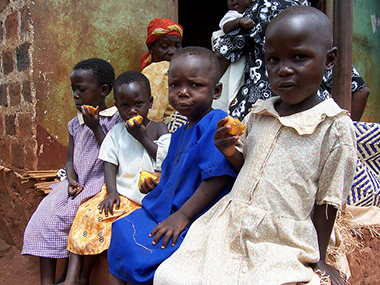Participation is a prerequisite for development projects to have positive effects on the lives of the poor; without participation, it is unlikely that programs will have any positive impacts. The level of participation almost certainly also affects positive outcomes from development interventions, and if that variation in outcomes by participation level can be measured, then future programs can be designed with inducing more intensive participation to produce larger positive effects in mind.
An important example for IFPRI of this dynamic in action are agricultural interventions designed to improve nutritional status among vulnerable groups. Nutrition sensitive agriculture requires participation on multiple levels—both in agricultural production and in changing consumption– to improve nutritional status. An example of a success story is HarvestPlus’ Reaching End Users (REU) project that took place between 2006 and 2009 in Mozambique and Uganda. The REU aimed to promote the adoption and consumption of orange sweet potato (OSP) rich in vitamin A through integrated agricultural, nutritional, and market level components. The impact evaluation associated with the REU found that vitamin A intakes increased in the treatment groups relative to the control group, the prevalence of vitamin A deficiency decreased among target populations in both Mozambique and Uganda, and serum retinol levels increased among moderately deficient children in Uganda.
In a paper just published in the Journal of Development Studies, we go beyond merely providing estimates of the average treatment effects on the treated of the REU on nutritional outcomes in Mozambique. Though the REU model was integrated, farmers chose their level of participation in the intervention once it was offered at the farmer group level– they could effectively choose their level of involvement in both the agricultural and the nutrition components. To measure participation intensity, we use project data and the endline survey data to measure whether or not farm households participated in specific activities associated with the agricultural and nutrition components. In constructing our measures, we chose specific activities that clearly suggest more intense participation (for example, participating in agricultural extension rather than just receiving vines).
A clear challenge in defining intensity is that, as mentioned, the choice of participation intensity is endogenous. Consequently, we interpret coefficients largely as correlations. That said, to attempt to control for positive selection into higher participation intensity, we also present instrumental variables estimates on composite intensity variables, generated through correspondence analysis on the discrete measures of participation intensity.
We use three measures of nutritional outcomes in the paper, all measured at endline: vitamin A density in the diet of children aged under three at baseline, mean micronutrient density adequacy, and the dietary diversity score. Not surprisingly, we find that participation intensity matters. To summarize, we find that the REU had fairly sizeable impacts on narrow measures of nutritional intakes but smaller impacts on broad impacts of nutritional intakes. The outcomes of the REU vary substantially when we measure the participation intensity in the two major components of the intervention. Regardless of whether we consider the agricultural or the nutrition component of the intervention, we find that point estimates for impacts among the more intensely participating group are higher than for the less intensely participating group. For example, vitamin A density in the diet is about twice as high among the more intense participants than among the less intense participants.
As the average program impacts on broad measures of nutritional intakes are relatively modest, from a program design perspective these stronger results among those who participated more intensively is quite important, even if some of this difference is due to preferences to participate more intensively among some beneficiaries. It suggests that average program impacts could have potentially been improved through changes in the program design. From an agricultural perspective, inducing more farmers to participate in extension could have had larger impacts. From the nutrition perspective, direct contact from extensionists to promoters had larger impacts than contact from promoters to other mothers in the community. The promoter model may have just been ineffective in serving mothers who were not promoters themselves. If deemed cost effective, future projects could be designed with additional inducement for participation in extension and closer contact with mothers to achieve greater impacts.







